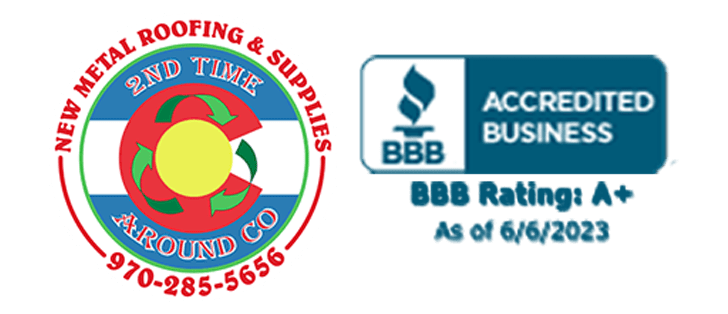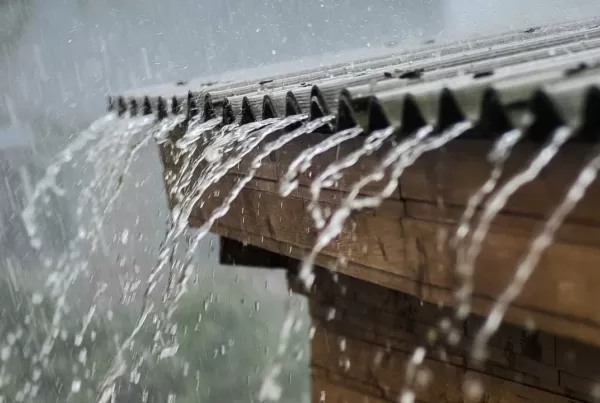Do metal roofs rust? Well, it does. When a metal roof rusts, it can quickly become a nightmare!
The once gleaming and durable surface can quickly deteriorate into a patchwork of reddish-brown stains, indicating the breakdown of the metal’s protective coating. The rust not only looks unsightly, but it also weakens the structure of the roof, making it more susceptible to leaks and other damage.
As rust eats away at the metal, holes can form, allowing water to seep through the roof and cause significant water damage to the interior of the building. The roof’s performance can be compromised, causing increased energy costs as the roof becomes less effective at insulating the building. In addition to the practical problems, a rusted metal roof can also affect the aesthetic appeal and curb appeal of a property, potentially decreasing its value.
It is essential to take preventative measures to avoid rust, as dealing with a rusted metal roof can be a costly and time-consuming process
Factor Involved!
When it comes to metal roof rusting, there are several factors that can contribute to this problem. Understanding these factors is essential to prevent rust and maintain the longevity of the roof. In this section, we will discuss four primary factors that contribute to metal roof rusting.
Type of metal used for roofing:
Different types of metal used for roofing have varying levels of susceptibility to rust. Steel is one of the most commonly used metals for roofing, but it is prone to rusting if not coated or finished properly. Aluminum is highly resistant to rust and corrosion, but it can be more expensive than other metals. Copper and zinc are also popular options for metal roofing, and they both develop a patina over time that can protect them from rust. However, they are also more expensive than steel and aluminum.
Coating or finish applied to the metal:
The coating or finish applied to the metal plays a crucial role in preventing rust. Galvanized steel is a popular option for metal roofing because it is coated with a layer of zinc that protects the steel from rust. However, if the galvanized coating is damaged or corroded, the steel can still rust. Other coatings and finishes, such as paint, zinc alloy, or aluminum, can also be used to prevent rust. The quality and durability of the coating or finish can determine how long the metal roof can resist rust.
Exposure to moisture, air, and other environmental elements:
Metal roofs are exposed to a variety of environmental elements, including rain, snow, wind, and sunlight. Moisture is one of the most significant factors that contribute to metal roof rusting. When metal is exposed to moisture, it can create a corrosive environment that leads to rust. Air pollution, such as acid rain, can also accelerate the corrosion process. In addition, exposure to salty air in coastal regions can increase the risk of rusting.
Quality of installation and maintenance:
The quality of installation and maintenance can significantly impact the lifespan of a metal roof. Poor installation can lead to gaps, holes, or other imperfections that can allow water to penetrate the roof and cause rust. Regular maintenance, such as cleaning a metal roof, debris and checking for any damages, is also crucial to prevent rust. If any damage or rust is detected, it should be addressed promptly to prevent further deterioration.
Preventing metal roofs from rust
Prevention is key when it comes to metal roof rust. By taking proactive steps to avoid rust, property owners and managers can ensure that their metal roofs remain durable and long-lasting. In this section, we will discuss four primary prevention strategies for metal roof rust.
Regular inspection and maintenance:
Regular inspection and maintenance are essential to preventing rust from developing on a metal roof. Property owners and managers should conduct regular visual inspections of their roofs, looking for signs of rust or damage. Any areas that show signs of rust should be addressed promptly to prevent the rust from spreading. In addition, keeping the roof clean and free of debris can help prevent moisture buildup, which can lead to rust.
Proper installation:
Proper installation is critical to preventing rust on a metal roof. When a metal roof is installed, it is important to ensure that the roof is properly sealed to prevent water from seeping in. The installation should be done by a professional who has experience working with metal roofs. Any gaps or holes in the roof should be addressed promptly to prevent rust from developing.
Choosing the right type of metal and coating for your environment:
Choosing the right type of metal and coating for your environment can help prevent rust from developing on a metal roof. Stone-coated metal roofs are a popular choice these days. Some metals are more resistant to rust than others, such as aluminum and copper. The coating or finish applied to the metal can also make a big difference in preventing rust. For example, a galvanized coating can protect steel from rust, while a paint or zinc alloy coating can provide additional protection.
Applying rust inhibitors:
Applying rust inhibitors can help prevent rust from developing on a metal roof. Rust inhibitors can be applied to the metal during installation or at any time during the life of the roof. These inhibitors help to create a protective barrier on the metal, preventing moisture from penetrating the surface and causing rust.
Conclusion
Preventing metal roof rust requires a combination of regular inspection and maintenance, proper installation, choosing the right type of metal and coating for your environment, and applying rust inhibitors. By taking proactive steps to prevent rust, property owners and managers can ensure that their metal roofs remain durable and long lasting, and maintain their aesthetic appeal. Preventative measures can help property owners avoid the costly and time-consuming process of dealing with a rusted metal roof.




